Wool
Wool is a natural fiber that comes from the fleece of sheep and other animals such as goats, rabbits, and alpacas. It is one of the most versatile and widely used fibers in the textile industry.
Structure of Wool
Wool fibers are composed of a protein called keratin, which has a unique structure that gives wool its properties. The outer surface of wool fibers is covered with scales, which overlap and provide wool with its characteristic texture and resilience.
Properties of Wool
Wool has several unique properties that make it desirable for various applications:
- Insulation: Wool fibers have a natural crimp that creates tiny air pockets, providing excellent insulation against both cold and heat.
- Moisture-wicking: Wool can absorb moisture vapor and wick it away from the body, keeping the wearer dry and comfortable.
- Elasticity: Wool fibers can be stretched and still return to their original shape, making wool garments resistant to wrinkles and sagging.
- Flame resistance: Wool is naturally flame-resistant, making it a safer choice compared to many synthetic fibers.
Uses of Wool
Wool is used in a wide range of applications, including:
- Apparel: Wool is commonly used to make sweaters, suits, coats, and other clothing items.
- Home textiles: Wool is used in blankets, rugs, carpets, and upholstery due to its warmth and durability.
- Industrial applications: Wool fibers are used in filtration, insulation, and padding materials.
Environmental Impact
Wool is a sustainable and renewable resource. Sheep grow a new fleece every year, and wool is biodegradable, making it an eco-friendly choice compared to many synthetic fibers. Additionally, wool's inherent properties reduce the need for frequent washing, saving water and energy.
Study Guide
- What is the composition of wool fibers?
- Explain the insulation properties of wool.
- List three common uses of wool.
- Discuss the environmental impact of wool compared to synthetic fibers.
◂Science Worksheets and Study Guides Seventh Grade. Protists and Fungi

 Worksheet/Answer key
Worksheet/Answer key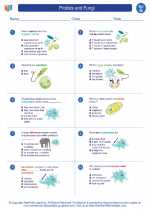
 Worksheet/Answer key
Worksheet/Answer key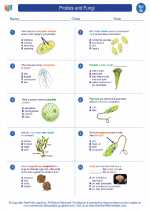
 Worksheet/Answer key
Worksheet/Answer key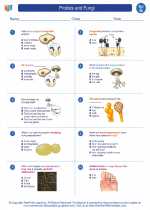
 Worksheet/Answer key
Worksheet/Answer key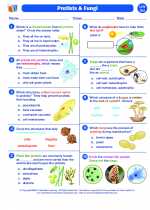
 Vocabulary/Answer key
Vocabulary/Answer key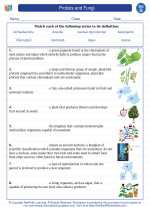
 Vocabulary/Answer key
Vocabulary/Answer key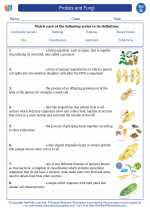
 Vocabulary/Answer key
Vocabulary/Answer key
 Vocabulary/Answer key
Vocabulary/Answer key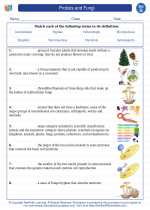
 Vocabulary/Answer key
Vocabulary/Answer key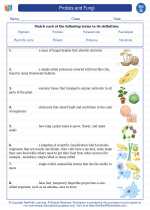
 Vocabulary/Answer key
Vocabulary/Answer key
